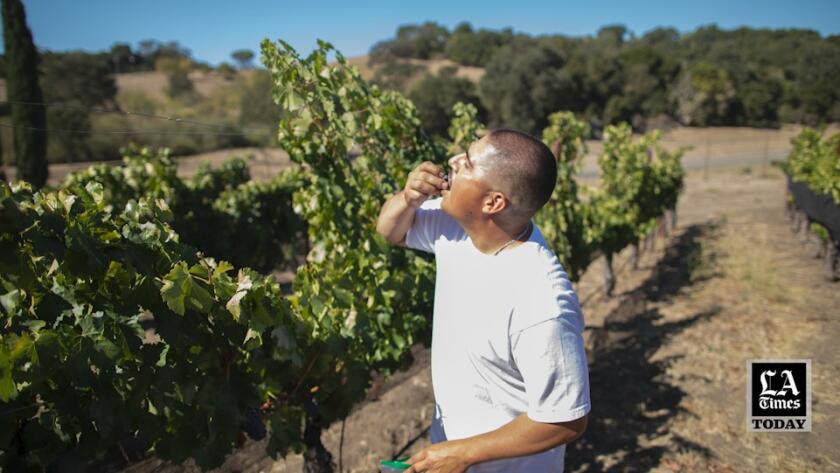
- Share via
Five years ago, Californians began to take notice of Edgar Torres, a boutique vintner in Paso Robles whose Spanish-inspired wines were already earning accolades.
But it was Torres’ backstory that really piqued people’s interest. At the age of 8, he emigrated from his native Michoacan to the United States with his younger sister and a family friend in the back of a Volkswagen bus. He grew up in Cambria and moved to Paso Robles in 2002, where he became a waiter at Villa Creek Restaurant, a local winemaker hangout where he developed his palate for wine.
Encouraged by several local wine producers, Torres ended up working in the industry, starting as a “cellar rat” and eventually landing at Hug Cellars where he worked his way up to assistant winemaker under his mentor, winemaker Augie Hug.
In 2005, he became the first Mexican American vintner in Paso Robles.
But for Torres, his heritage is a bit of a mixed blessing. He stands out in a competitive market— notable for its prestigious Central Coast wines — but he finds himself managing other people’s expectations of what it means to be a Latino winery owner.
Shortly after he was featured in local media as the first “Mexican American winemaker,” a man came into his tasting room with a camera. “Hey, you’re the Mexicano,” the visitor said, before snapping a photo and leaving. He didn’t try the wine; he just got in his car and drove away.
Sometimes Torres, 42, gets the feeling that his sleek, modern tasting room may not meet people’s expectations of what it means to be a Latino winemaker.

“I feel like there is this stereotype. People think, ‘Oh, man, we are going to be in there, and this fool is going to be playing ‘Chente’ and there is going to be a piñata,’” Torres said, referring to legendary Mexican singer Vicente Fernández.
“I grew up with so many influences. I grew up with surfer, skater kids in Cambria,” he said. There’s nothing wrong with “Chente” and piñatas, he added, but his identity has been forged by countless experiences.
::
California is home to an estimated 45 Latino-owned wineries. They make up only a fraction of the state’s 4,500 producers, but their numbers are growing, said Alex Saragoza, who is writing a book on the rise of Mexican winemakers in the United States, primarily in California. Naturally, those winemakers hope to capture some of the expanding Latino market, as well as a bigger share of the general market. (In 2013, Latinos consumed an estimated 46.6 million cases of wine in the U.S., a figure that’s expected to double in 10 years.)
But that hope requires them to make complicated decisions about how they market and brand their wine in a white-dominated industry that’s long been associated with Eurocentric refinement.
These decisions take on a greater poignancy in a state where the industry thrives on fruit picked by Latino farmworkers, whose stories historically have been relegated to scraps of oral history.
Who is most likely to drink our wines? Do we strive to make our wines accessible or focus solely on quality no matter the cost to the consumer? Do we spotlight our family story, or do we simply let the wine speak for itself? And why does a Latino winemaker have to choose?
Every Latino vintner has their own story of how they made it. Some more established businesses — Ceja Vineyards, Robledo Family Winery and Maldonado Vineyards — were born in the fields of Napa and Sonoma counties. They’re run by the children and grandchildren of immigrants who labored in the vineyards, some as part of the bracero program, which brought millions of Mexican agricultural guest workers to the U.S. between 1942 and 1964.
Others, like Torres, arrived in this country without legal status, and worked in hospitality — sometimes as servers at high-end restaurants — where they were exposed to wine, fell in love with it and worked their way up from the cellar.
A few are the children of Latin American immigrants who prospered in lucrative corporate careers that afforded them the opportunity to travel and discover their passion for wine before launching their own labels.
For many of these vintners, their heritage is front and center and intimately intertwined with their brand with names like “Los Braceros” or “El Rey.” For others, who want consumers to solely focus on quality, heritage comes second.
At Top, a winery in Paso Robles, Elena Martinez and Stanley Barrios make a small collection of Rhone varietal wines, purchasing grapes from some of the most prestigious vineyards in the region. In 2014, they made their first eight barrels of wine — about 200 cases. In 2021, they produced 135 barrels, about 3,800 cases of wine. Their 2019 Poise, a Roussanne, is listed on the menu of the French Laundry in Yountville for $100 a bottle.
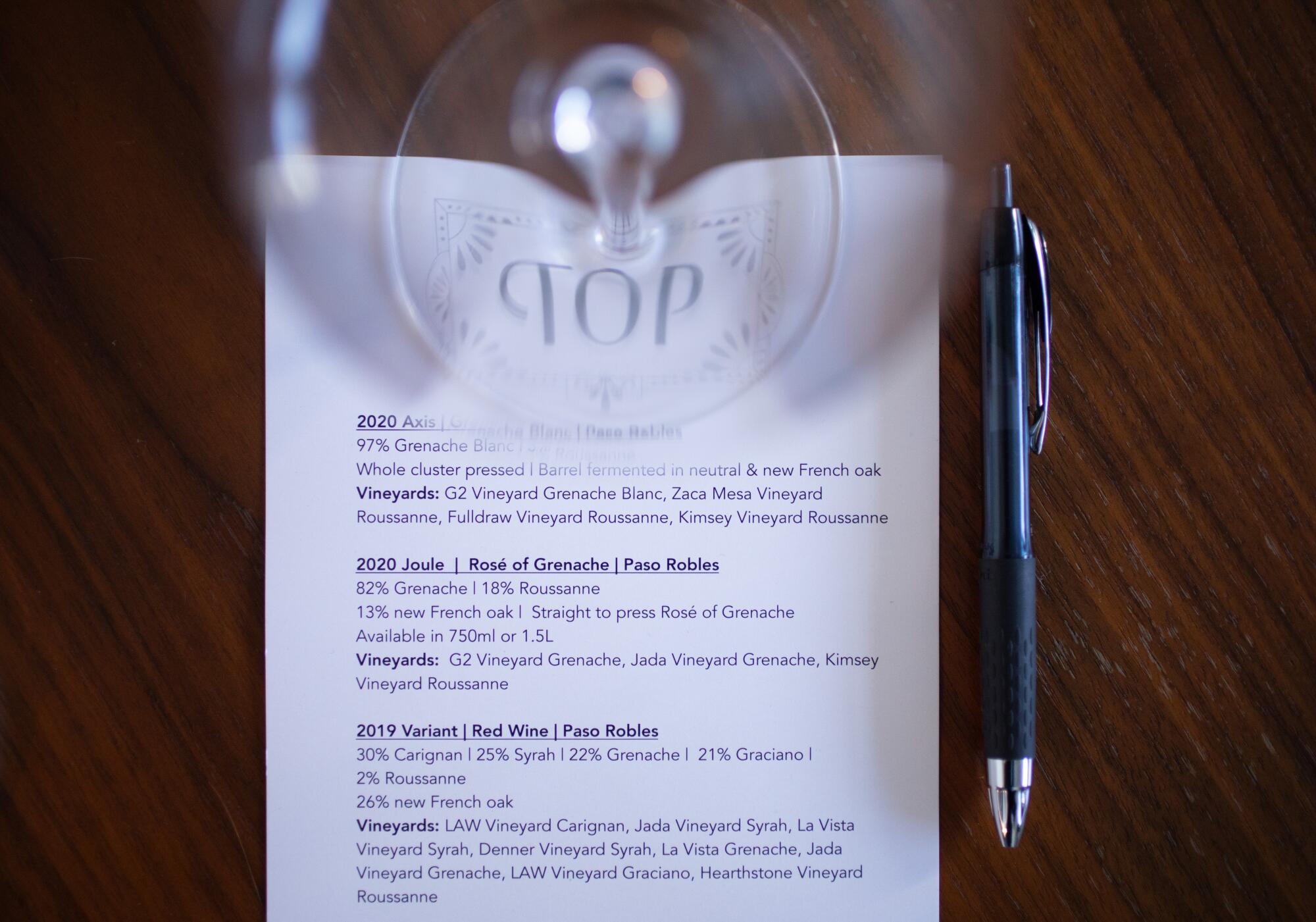
Martinez, 39, and Barrios, 40, are the children of Latin American immigrants who were born and raised in the Los Angeles area. But that’s not mentioned on their website, on their bottles or in their tasting room, a sleek, Mid-Century space. A bottle of wine at Top, named after the spinning toy that both owners played with as children, can be pricey. Their well-balanced 2019 Rosé of Grenache is $65. Nearly all their wine is sold exclusively to wine club members, most of whom are non-Latino.
“We don’t think quality has a race or gender,” Martinez said. “We’ve worked so hard at being an organization that is reputable for quality and hospitality, and a bonus happens to be that we are Latino.”
While the couple’s Latinidad isn’t at the forefront, Martinez said, it does inform their entrepreneurial spirit. Launching their wine business was a way of telling their parents, “Thank you for your struggles.”
Nancy Ulloa, of Ulloa Cellars, takes a different approach, focusing on the Latino consumer with her marketing and prices. Ulloa said she determined the price — $33 a bottle — based on other, similar small-batch wine that usually goes for about $45. It’s what her siblings and parents could afford, she said.
“I want it to be an inclusive experience,” she added. “I want to be able to include people like my parents who are often overlooked or neglected, people who don’t think they are capable of understanding wine.”
A 36-year-old immigrant from Guadalajara, Mexico, Ulloa specializes in creating small batches of white wines, such as albariño, grüner veltliner, verdejo, sémillon and pinot blanc.
Her mystical labels feature drawings of women, including her mother, and each bottle is inscribed with an affirmation in Spanish, such as “Todo lo que toco se convierte en oro” — “Everything I touch becomes gold.” In 2021, she made 300 cases of wine, and most of her sales are online.
::
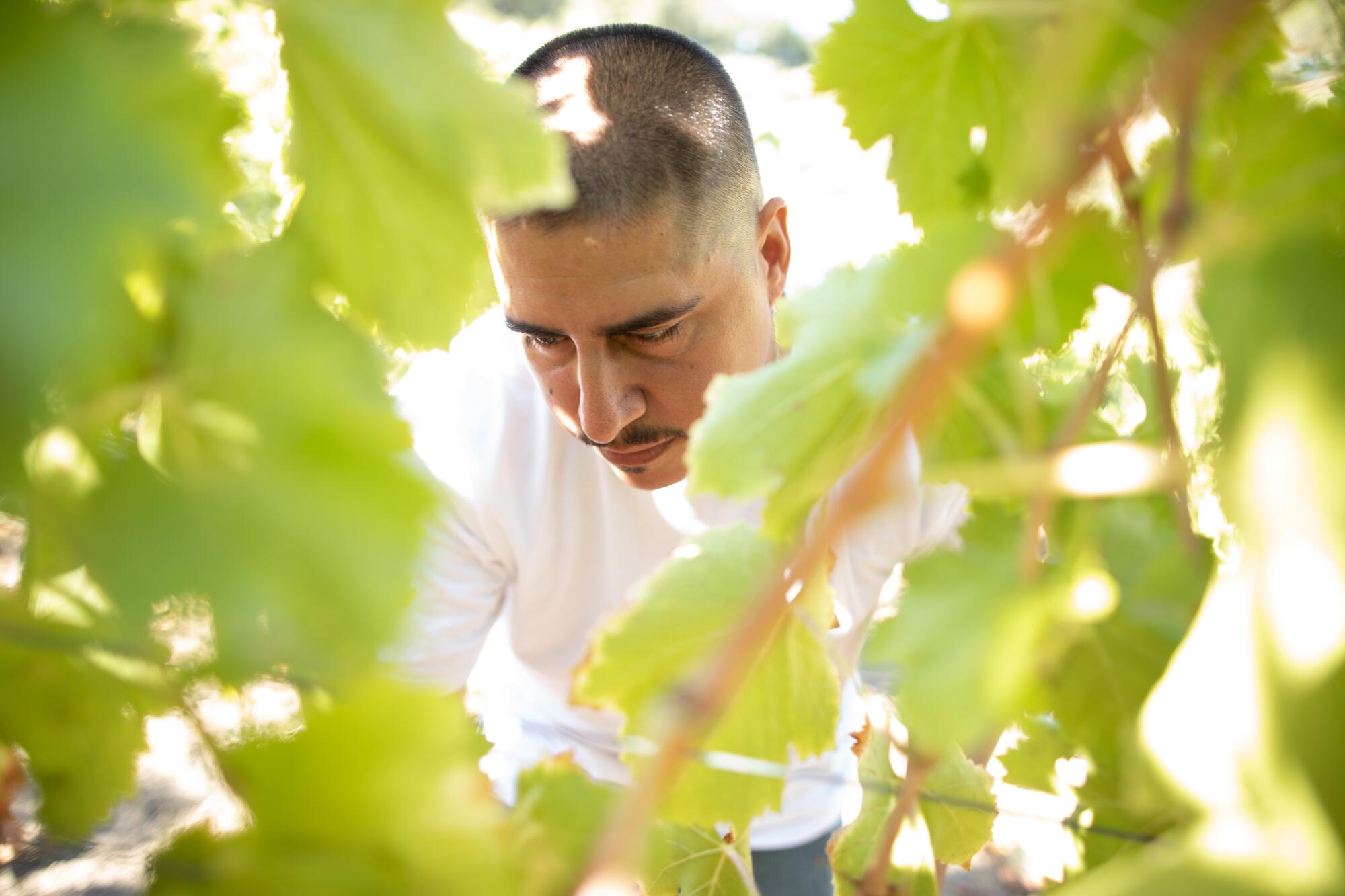
Martin Reyes, the first master of wine of Mexican descent — a certification issued by the Institute of Masters of Wine in the United Kingdom — likes to say that the “Hispanic community has had a relationship” with wine “that is every bit as long as any European relationship.”
In 1524, conquistador Hernán Cortés signed a decree stating that all landowning settlers who were slave owners had quotas for planting Spanish grape vines. But years later, Spanish producers began to feel threatened by the success of vineyards in the Americas. Under pressure, in 1595 King Philip II of Spain prohibited almost all new wine grape cultivation in Mexico, limiting it solely to sacramental wine for Catholic parishes.
“The country with the largest Hispanic influence in the U.S. could have had wine as part of its history to the same degree as other countries,” Reyes said. “But by a quirk of fate, it didn’t.”
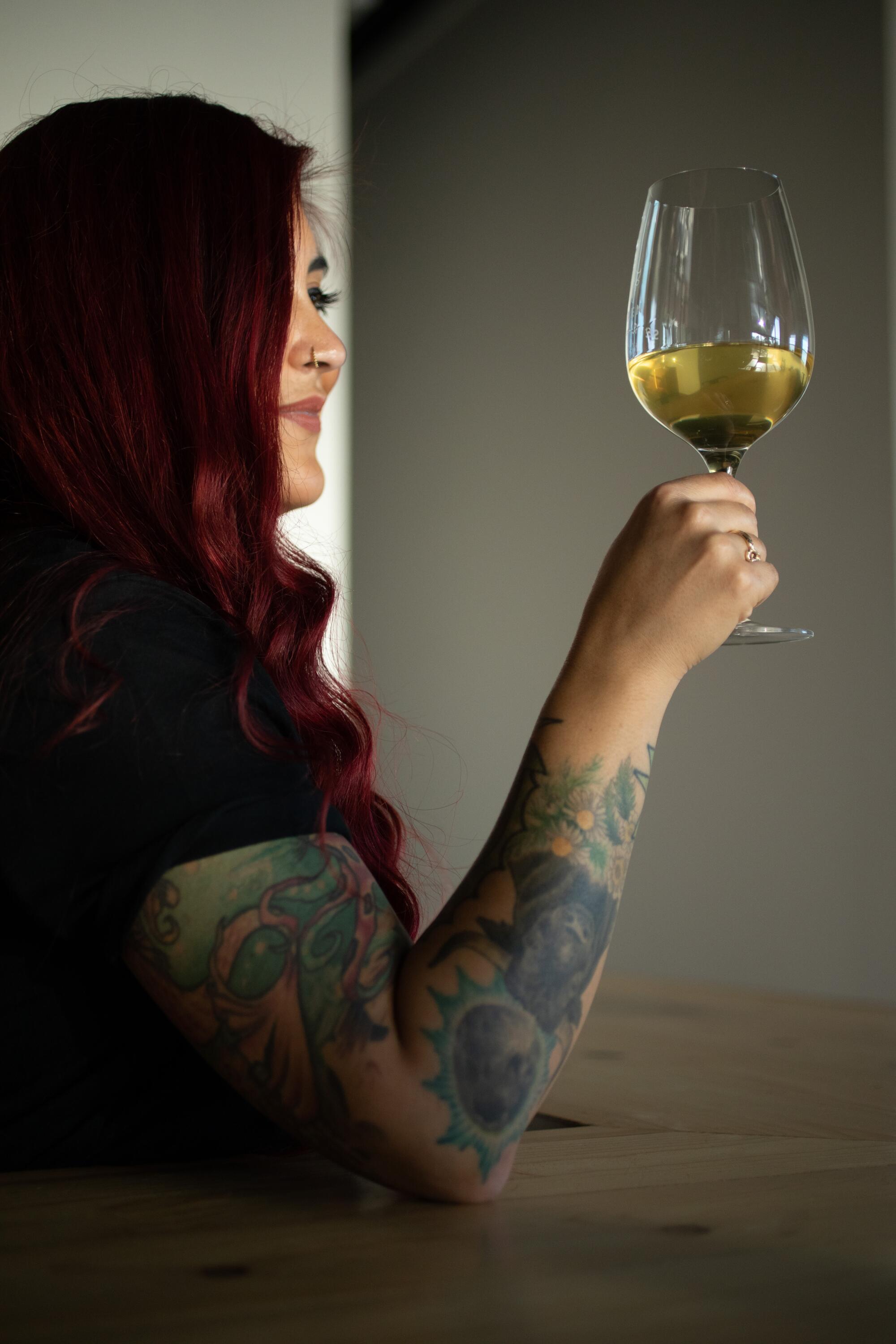
Reyes says wine falls in line with the warmth of Latino gatherings.
“What is wine about? Conviviality. Nothing could be more Latino than wine,” Reyes said. “Wine is so Latino, it hurts.”
::
Everardo Robledo, chief executive of Robledo Family Winery in Sonoma, is a fourth-generation member of a Mexican American family that is devoted to viticulture. His parents launched the first winery in the U.S. established by Mexican migrant vineyard workers on their own land.
The family left Michoacan to work in the vineyards under the bracero program. In 1968, the current family patriarch, Reynaldo Robledo Sr., was a teenager when he joined his father and ended up living in a labor camp in Napa. He went from working in the vineyards to becoming a master grafter and eventually owning land and opening his tasting room.

“In that time there weren’t many of us Mexicans,” Reynaldo Robledo said in Spanish. “But at one point, I went to teach grafting to the French, the Spanish and Moroccans in France.”
The Robledos produced their first vintage in 1992, a pinot noir from Los Carneros, in Napa. They launched their commercial wine production from their estate grapes in 1997 in Sonoma and opened their tasting room in 2001.
On a recent fall afternoon, Reynaldo Robledo sat at the head of a long hand-crafted wooden table in his family’s tasting room, an homage to Mexican culture, which is prominent in his wine’s branding. Wearing a black cowboy hat, plaid shirt and cowboy boots, the 71-year-old sipped on a 2019 El Rey, a cabernet sauvignon. The wine was made by his children in tribute to him.
Music from the Mexican rock band Maná emanated from the speakers. Papel picado flags were hanging from the ceiling, and the walls were filled with photos of family and history, including an image of him next to then-Mexican President Felipe Calderón and President Obama during a 2010 White House visit.
Soon after opening their tasting room, Maria de La Luz Robledo and daughter Vanessa Robledo started hosting events featuring their wine alongside traditional Mexican food, often cooked by Maria. Their sauvignon blanc was served with ceviche. Their pinot noir was paired with pozole; their chardonnay, with fried chicken empanadas.
“We did the pairings so people didn’t have to think of, ‘What am I going to pair with our chile relleno?’” Reynaldo Robledo said. The family produces 20,000 cases of wine annually under the Robledo label. Bottles of their wine sell between $22 to $125. Today, about 40% of visitors and wine club members connected to the winery are of Latino heritage.
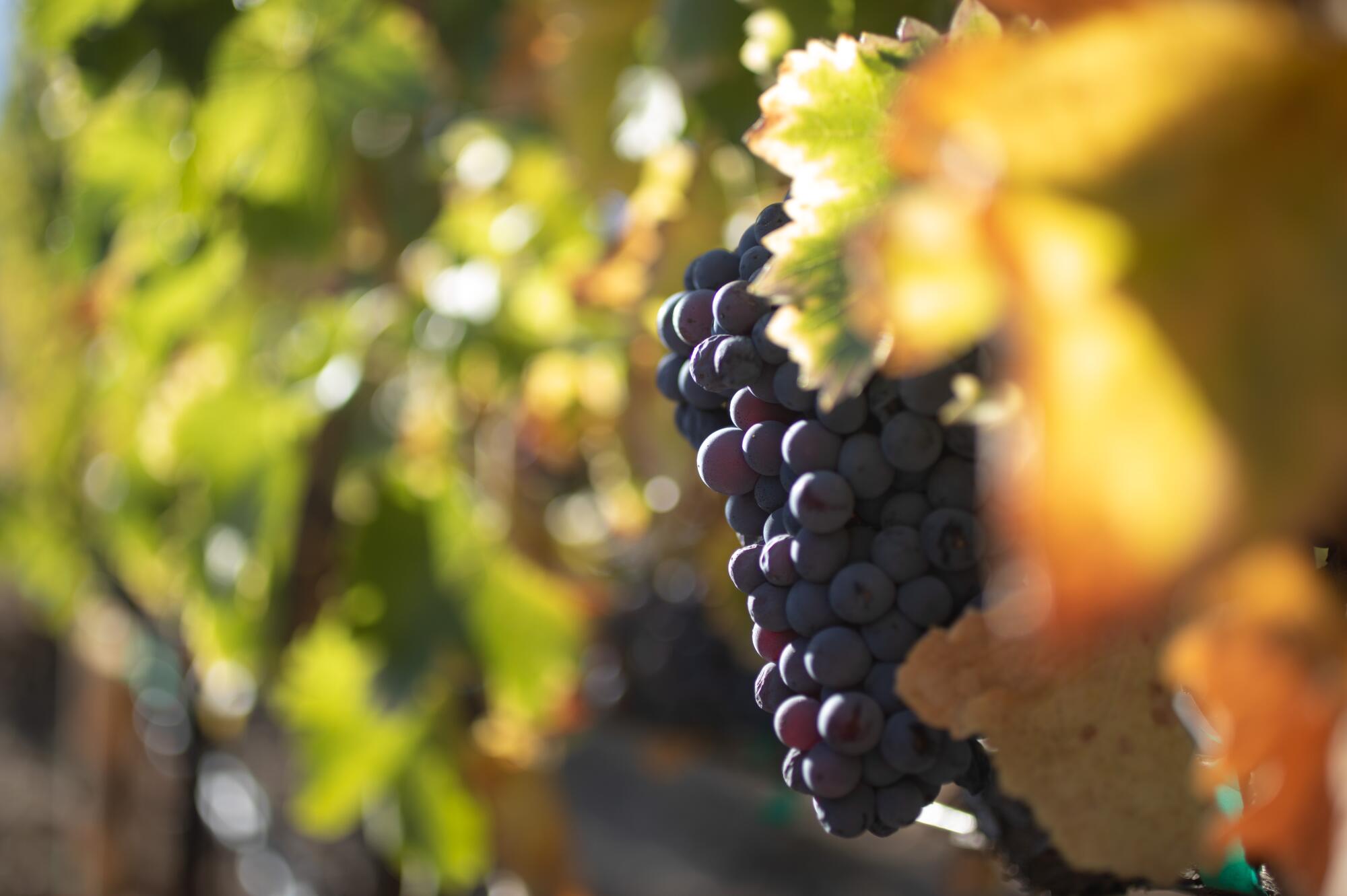
Amelia Morán Ceja, the first Mexican American woman to be president of a winery, also has a following for her cooking demonstrations in the Bay Area, where she paired and promoted Ceja Vineyards wines with traditional Mexican fare and other international cuisines.
In 1967, then-12-year-old Morán Ceja moved to the Napa Valley, where she and her parents worked in the vineyards. She met her future husband while they were picking grapes, and the two of them and her in-laws eventually pooled enough money to buy their first parcel of land in 1983 in Los Carneros, an American viticultural area that includes land in Sonoma and Napa counties and is known for cooler-climate grapes such as chardonnay and pinot noir. The Ceja brand launched in 2001, and today the winery produces 3,500 cases annually. The price range per bottle — $35 to $150 — varies, depending on the variety.
When Morán Ceja started, she was told by a renowned winemaker that marketing to Latinos and other people of color didn’t make sense because they “didn’t have discretionary income for luxury products.”
She ignored him.
“We knew from the very beginning that our bicultural identity was going to play a major role,” she said.
Morán Ceja wants consumers to know that her winery provides a pesticide-free work environment. Many of its field workers have been with the family company for years, and in 2016, Morán Ceja received the Dolores Huerta 2016 Farmworker Justice Award for her advocacy work on farmworker protections.
::
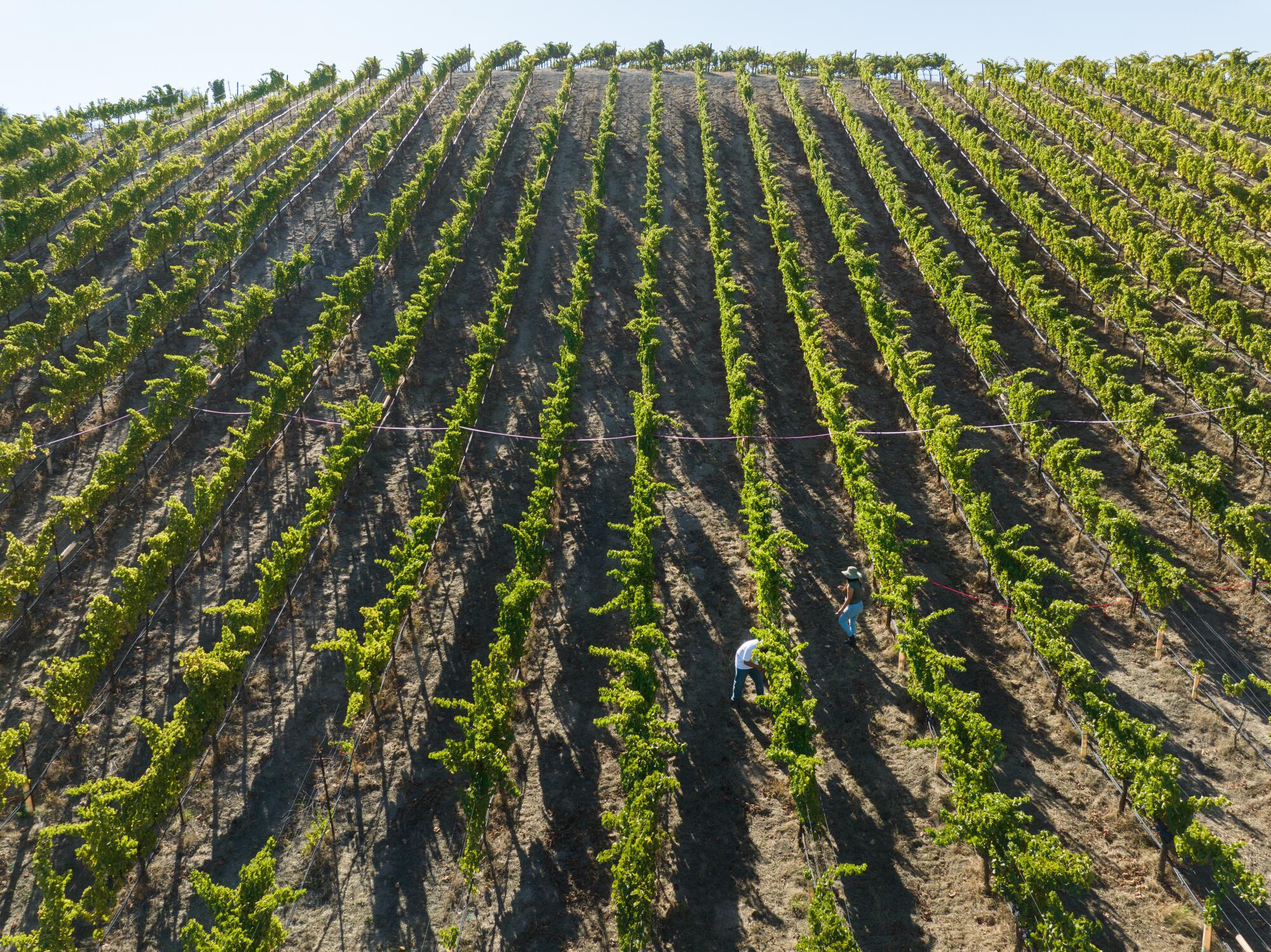
Latino winemakers are juggling a host of issues. All of them worry about how to get their wine to stand out in an oversaturated market. Others are concerned with how to make the wine world more welcoming to Latinos. Some agitate to provide better work conditions for the skilled farmworkers who tend the grapes or work in the cellars, just as their grandparents once did.
On a recent afternoon, at the Mondavi Farmworker Center in Napa, most of the Mexican farmworkers eating pozole in the dining hall sounded surprised to hear that some of the region’s winery owners are of Mexican heritage.
“Really?” Eulogio Lopez responded. The 35-year-old from Oaxaca works for a vineyard management company in Napa, making $19.50 an hour.
He said he doesn’t know who owns the vineyards. Most of his interactions are with the mayordomos — mostly men, in charge of the crews. Some of them treat him well; others, not so much. Most are Latinos, Lopez said.
That doesn’t come as a surprise to Gabriela Fernandez, 29, a Napa native who created and hosts the Big Sip podcast, which highlights people of color in wine, food, health, tech and the arts. While owners like the Ceja family stand out as positive examples, she said, discrimination and less-than-ideal farmworker conditions persist.
Fernandez is also a board member of Hispanics in Wine, a nonprofit organization dedicated to connecting, amplifying and supporting Hispanics and people of Latin American heritage in the beverage and hospitality business. It’s incumbent on all vintners — regardless of ethnicity — to ensure their farmworkers are treated well, she said. But Latino winery owners and vintners, she says, carry a greater responsibility because of the shared experiences dealing with inequities.
“To be a Latino, Hispano or someone who identifies within that scope, and directly place burdens and microaggressions to people of your same cultural identity — it’s gross,” she said.
In 2021, Hispanics in Wine launched its first LatinX State of the Wine Industry Summit, where Fernandez helped put together a panel on experiences in vineyard stewardship and workers’ rights called “Voices of the Vineyard.” But it was hard to get some workers to take part in the panel. They were too scared, fearing repercussions for speaking up, Fernandez said.
Before the group formed in 2020, there was no centralized place to connect Latino wine professionals in the U.S. Now, the group has more than 100 members — from sommeliers to vintners. They engage with Latino professionals who are interested in navigating the wine industry, said Lydia Richards, a co-founder of Hispanics in Wine who is a certified sommelier and owner of Vino Concierge.
“We see this potential that nobody is addressing,” said Richards, who identifies as Afro Latina, lives in New York and is originally from Panama. “The consumer is there. He or she has always been there, but nobody has done the effort to really market to them — specifically bigger and larger companies.”
Manny Gonzalez worked in Latino marketing in the wine and spirits industry for 17 years and says the wine category in the U.S. “is still under development with the Latino consumer. But we know that they are willing to spend dollars on super-premium quality products.”
The evolution of premium tequila makes for a good comparison, Gonzalez said. Twenty-five years ago, tequila was dominated by Cuervo Gold — “known as the quickest way to get drunk.” Now the bestselling tequila brands are of premium quality, and data show Latinos are willing to spend top dollar, which can range from $104 to $119, for Don Julio 1942.
“I think we’ll get there with wine,” Gonzalez said. “We’re going to see that same evolution in the U.S., but it doesn’t happen overnight.”
- Share via
Watch L.A. Times Today at 7 p.m. on Spectrum News 1 on Channel 1 or live stream on the Spectrum News App. Palos Verdes Peninsula and Orange County viewers can watch on Cox Systems on channel 99.
More to Read
Sign up for Essential California
The most important California stories and recommendations in your inbox every morning.
You may occasionally receive promotional content from the Los Angeles Times.
